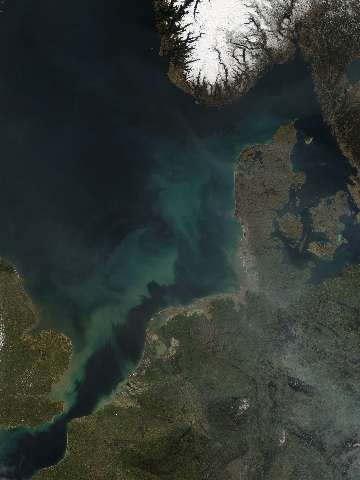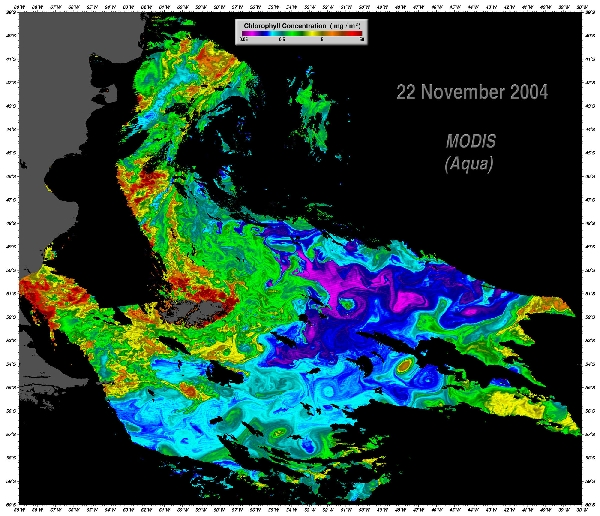|
Surely there is a microbe which naturally converts CO2 to a shell which could be grown by humans. Then CO2 could be injected into a rectangular tube filled with a solution saturated with these organisms. The byproduct would be a brick to be used as a new type of building material, grown for CO2 sequestration. A true artificial reef attacking global warming.
 |
 |
| Figure 57 River Thames Plume, NASA image captured March 26, 2007, courtesy of Jeff Schmaltz, MODIS Rapid Response Team at NASA GSFC.3.209 | Figure 58 Falkland Isl Marine Life, NASA
image courtesy the MODIS [Moderate Resolution Imaging Spectroradiometer] from NASA's Aqua satellite, captured by the Ocean Science Team at Goddard Space Flight
Center on November 22, 2004.3.210 |
Fish have a lot less weight or volume than the weight and volume of algae and plankton and other types of microscopic life in the shallow seas. Fish eat algae, plankton, insects, crustaceans, and other fish, depending on where a fish species falls along the food chain. Sitting at the top of the food chain, it is often easy for humans to forget how much life it takes to create the life we eat for dinner. Fish are much more complex than algae or plankton. Fish are typically cold-blooded, with a streamlined body to allow rapid swimming. Fish extract oxygen from water using gills. Fish have fins, lips, jaws, eyes, scales, a two-chambered heart, swim bladders, and typically lay eggs, which are fertilized externally.3.211 Fish certainly are an important part of the biological system that is being acted upon, particularly by humans.
|